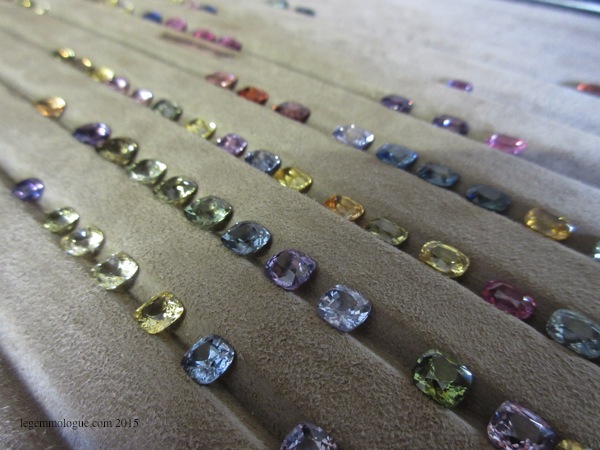There are fascinating encounters with houses that do not hide their pleasure in receiving you in order to allow us to better understand the functioning of their activity. But above all, these are houses whose activity is unknown to the general public.

29.68 carat unheated Burmese sapphire. Photo: The Gemologist
This is the case of Maison Piat, based in Paris and specialised in the trade and cutting of coloured stones. After a first fascinating interview with Emmanuel Piat on their space during Baselworld 2015, we had decided to make an appointment again to go and meet the whole team to share with you the specificities of this beautiful house installed on rue de la Paix.
The story begins in 1984 when Daniel Piat decided to create his own company after having worked for the Grospiron company. Indeed, he married Denise Grospiron at the end of the 1950s and joined the family business where he took charge of the cutting workshop and specialised in coloured stones. In 1961, he founded the Association Française de Gemmologie (AFG). Emmanuel Piat is a member of the Board of Directors of the association.

An old lapidary workbench typical of the Jura cuttings. Photo : Le Gemmologue
By starting his own company, he wanted to specialise in centre stones in order to offer his customers more important and often unique gems. Emmanuel, his son, joined his father in 1995. Trained as a designer, he trained in the trade by working on projects for the Sultan of Brunei who – in the mid-1990s – had a number of workshops working full time:“There was a project for a mapple for the Sultan of Bruneithere was a project for a world map made entirely of invisible settings. But we also worked on carpets or screens entirely set with stones.“

Natural and untreated 18.04 carat tourmaline with the “Piat” cut. Photo: Maison Piat
Quite quickly, he started training in gemmology at the ING, then in 1998 he officially took over the family business when his father retired. He then handed over to his sister – Isabelle Langlois – the company that he had previously initiated.
It was at this time (1996) that Myanmar, and particularly the famous Mogok deposits, opened up to tourists: “I went to the Mogok deposits to see what they were likeI went to the deposits, I wanted to see what it looked like. I also realised how things were organised and how important it was to build a strong network on the ground.“

Natural and untreated sapphires being re-cut by the workshop. Photo: The Gemologist
The years that followed enabled Atelier Piat to consolidate its position, notably by creating – in 2005 – a branch in Thailand to supply calibrated stones to their customers, but also by continuing to develop the lapidary workshop in France.

Sapphire being polished in the workshop. Photo: The Gemmologist
The company built up a loyal international clientele through several important trade fairs in which it participated: Tucson, Hong Kong and Basel. Soon the company moved to rue de la Paix to be closer to its customers. Indeed, the company works for more than 50% of its turnover with the great jewellers of the Place Vendôme. By moving to a location very close to the square, it can respond very quickly to requests and work in close collaboration with the workshops. Finally, two years ago, the company was awarded the prestigious Entreprise du Patrimoine Vivant (EPV) title, thus certifying the know-how that the company continues to perpetuate. It also initiates many innovative projects to keep the workshop at a very high level of production.
It should be added that the company only works with natural and untreated stones. It has its gems certified by numerous international laboratories to guarantee their quality.

Many rough sapphires from Madagascar that will be cut by the company’s internal workshop. Photo: The Gemologist

Emmanuel Piat explains to us the interest of the cutting that the house carries out on its gems and the way in which it positively influences the vivacity of the colour of the stones. Photo: The Gemmologist
The lapidary workshop offers many services to its customers: rough cutting, re-cutting or adjusting according to the project. It has also developed a special cut for the breeching of gems, which gives more “warmth” to the colour of the stone. The company is also developing training courses for its customers in order to train and initiate staff in the meticulous work carried out by lapidaries.

Natural and untreated sapphire from Sri Lanka, 7.08 carats. Photo: The Gemologist
Although the company does not work directly with private individuals, it does act as an expert before the courts. At the same time, it is beginning to develop a gem repurchase activity for individuals who often do not know who to contact when they wish to resell gems. Definitely a house with facets as brilliant as the stones it offers.
See you soon!






